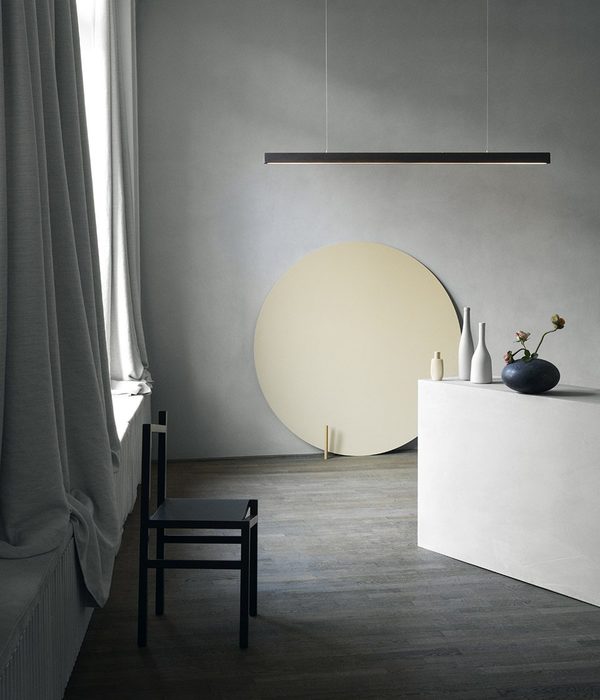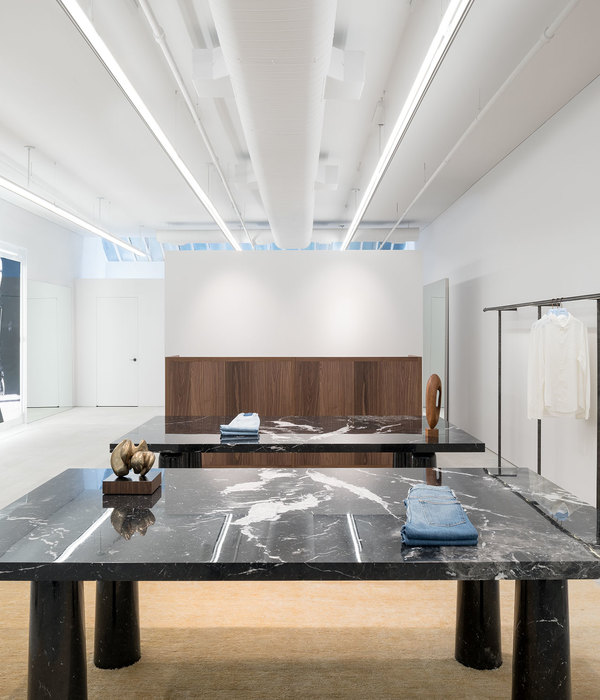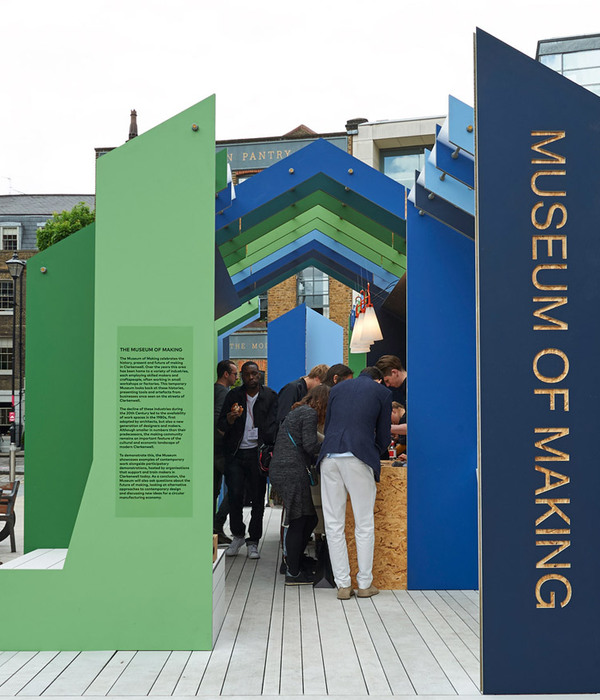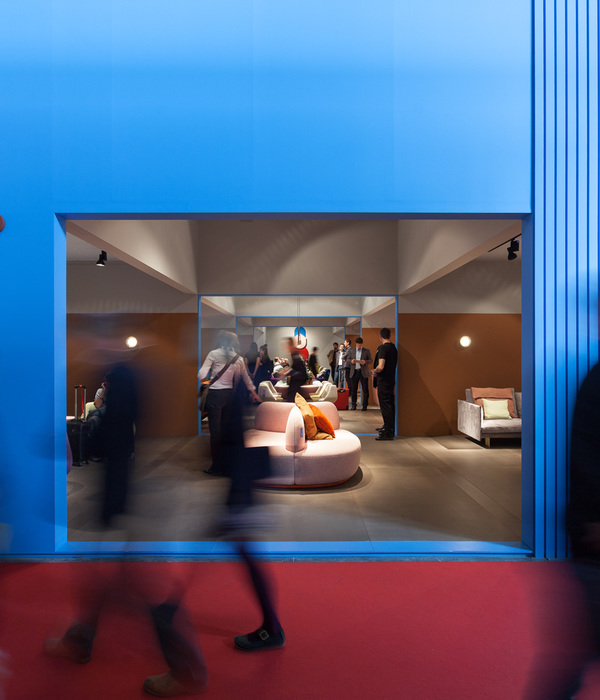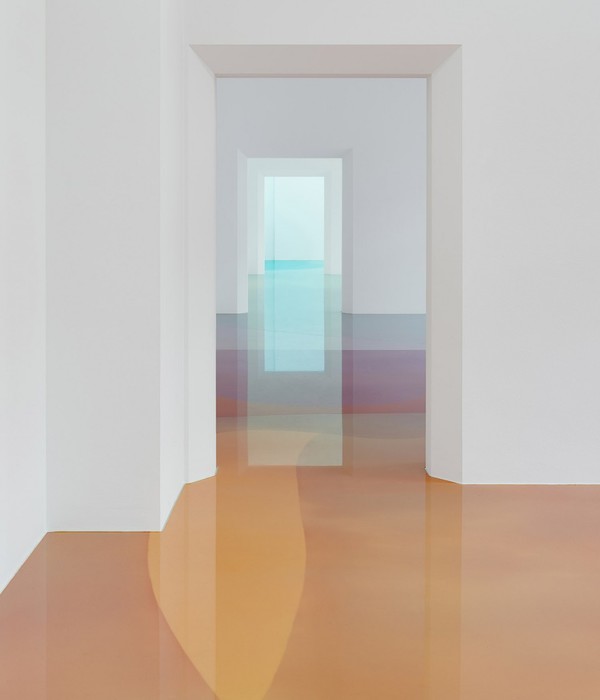韩国 Cheomdan 羽毛球馆——自然纹理融入建筑
该项目以展现自然的质感为设计初衷,这致使建筑的外形与室内的场馆规模截然不同。设计师希望沿用Youngsangang河岸的红褐色作为整空间的延续。
The plan began with concern about how to represent something of the texture of nature, which has a different character from the scale of the indoor stadium. We wanted the soft red-brown colour of the Youngsangang riverbank to continue throughout the mass.
▼与地表相融的建筑形态,the surface represents the texture of nature
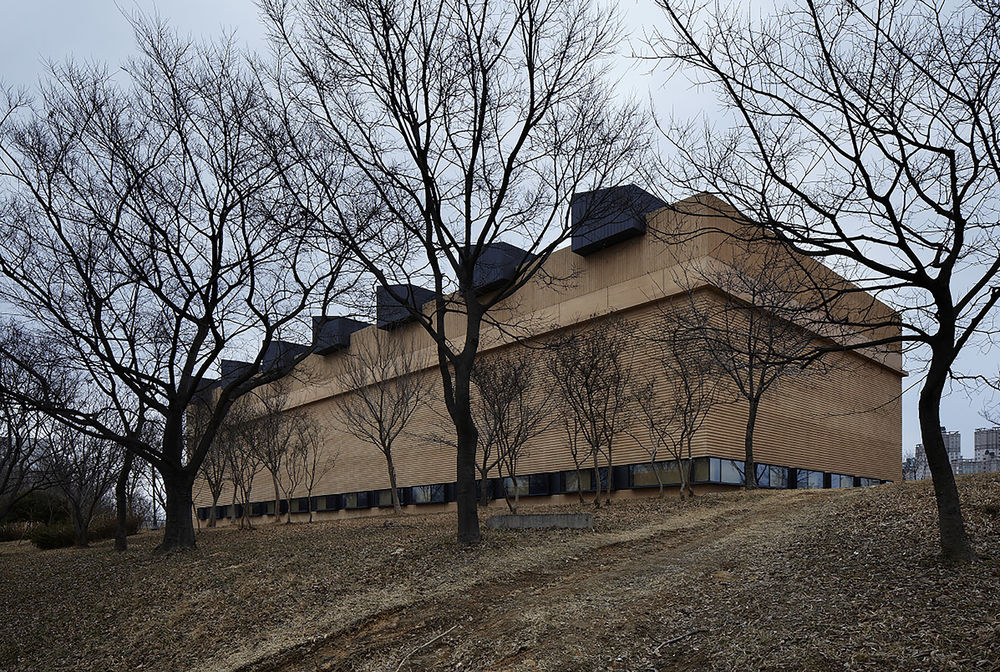
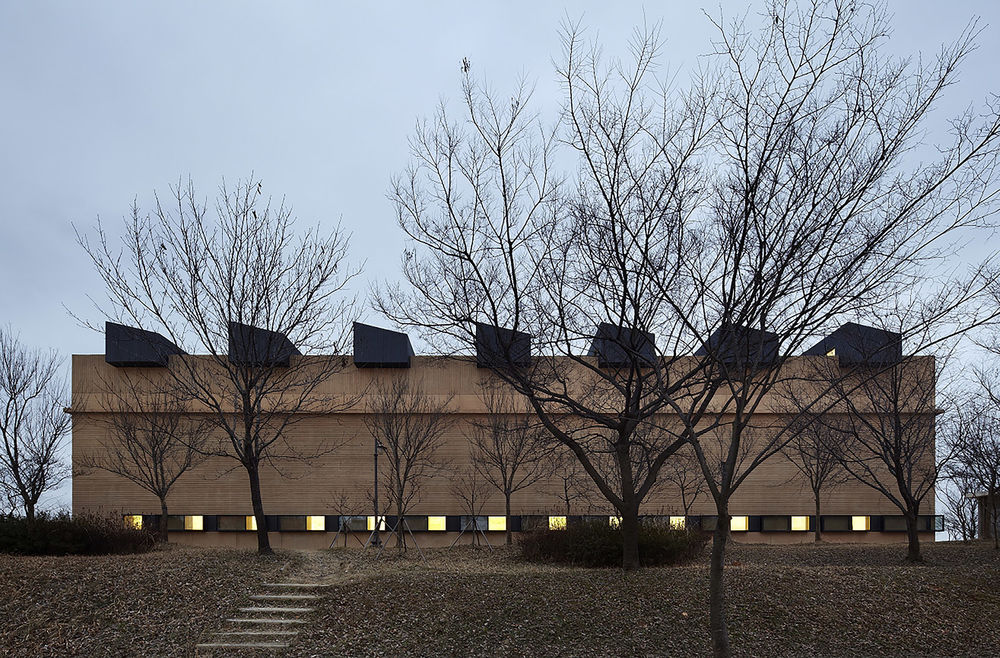
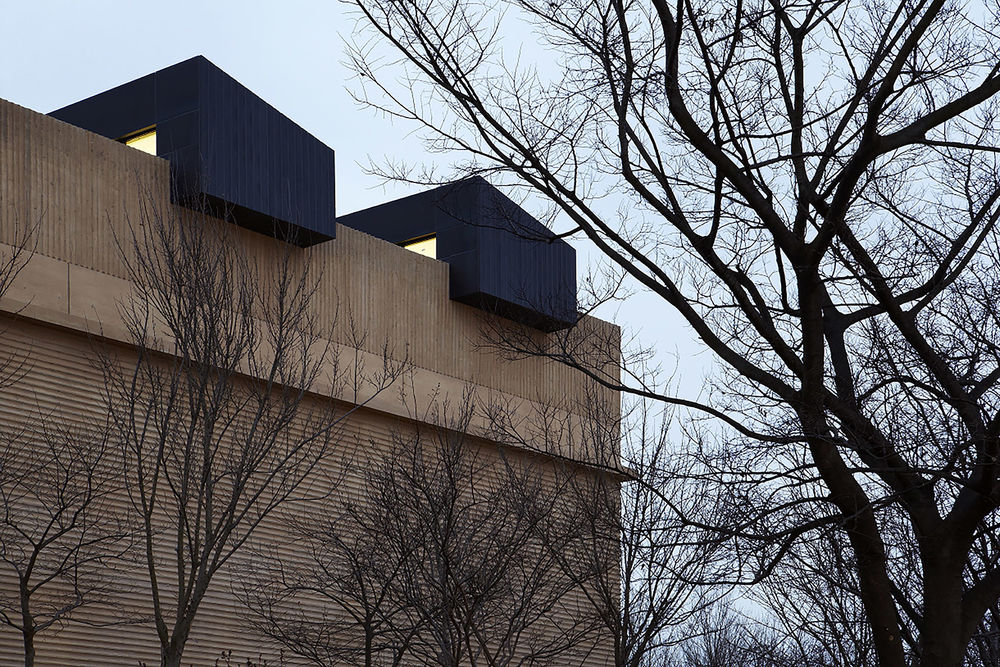
▼沿用Youngsangang河岸的红褐色,the soft red-brown colour of the Youngsangang riverbank
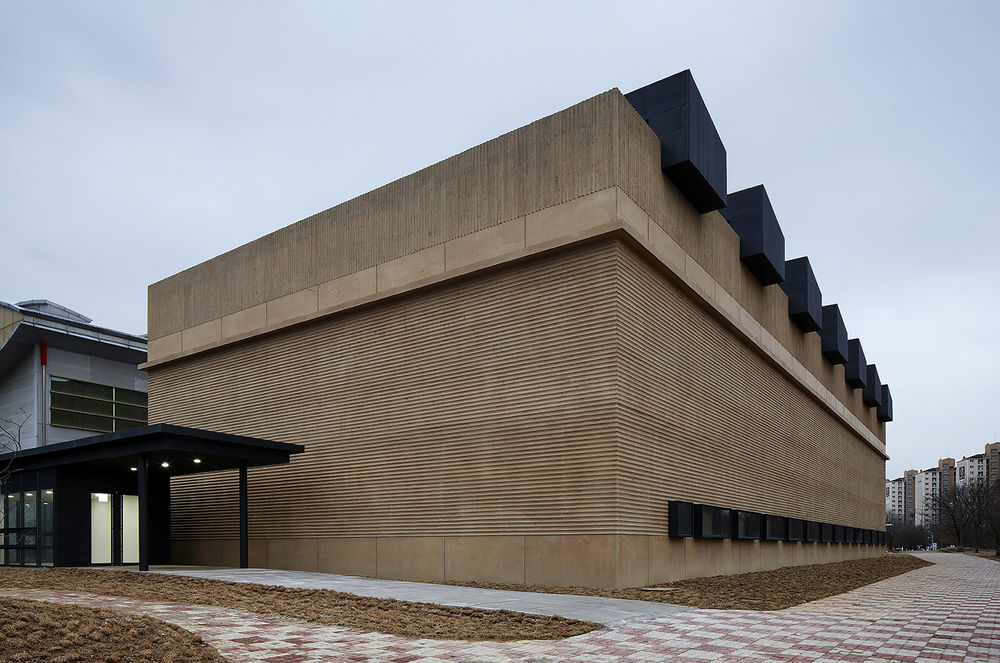
▼入口,entrance
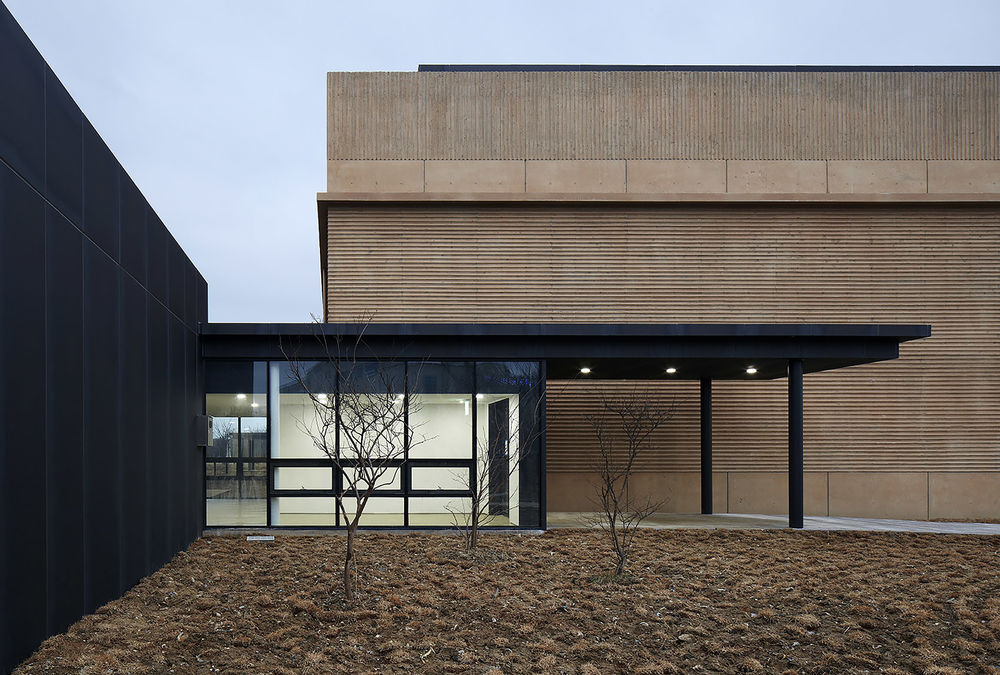
在内部空间结构作用或钢结构系统支撑下所形成的大阔度空间,通常会由于建筑结构和建筑设备的裸露造成视觉上的不美观。在该体育场馆项目中,PT梁增补了空间结构和大跨度混凝土梁的限制。场馆整体被置入长50米、宽20米、高12米的混凝土盒子中。该混凝土为无任何柱式支撑的混凝土墙体结构。PT梁按固定规模连续不断的排列在墙体上方,天花板铺设在PT梁间隙,使自然光间接透过屋顶射入室内。此外,一个50米长的投射窗口对自然光进行过滤。墙面的水平开窗环绕体育馆四周,将周围低矮处的花园景观收入其中。
The long span space is usually secured by the structural form of the interior space or the steel-frame structure, but it also causes a visual distraction due to exposed structural material and equipment facilities. For this stadium, the structural limit of the interior form and the concrete long span beam was supplemented by the PT beams. A seven-sided court was planned inside the 50x20x 12m (H) concrete box, which is a wall structure that does not allow any column exposure. The indirect light enters the building during the day as the PT columns are placed in a consistently proportioned module and placing the ceiling between the modules. Also, a 50m long projected window filters in additional light. The long horizontal window is wrapped around four sides of the stadium, which contains the low and deep scenery of the exterior park space.
▼大跨度室内空间,the long span space
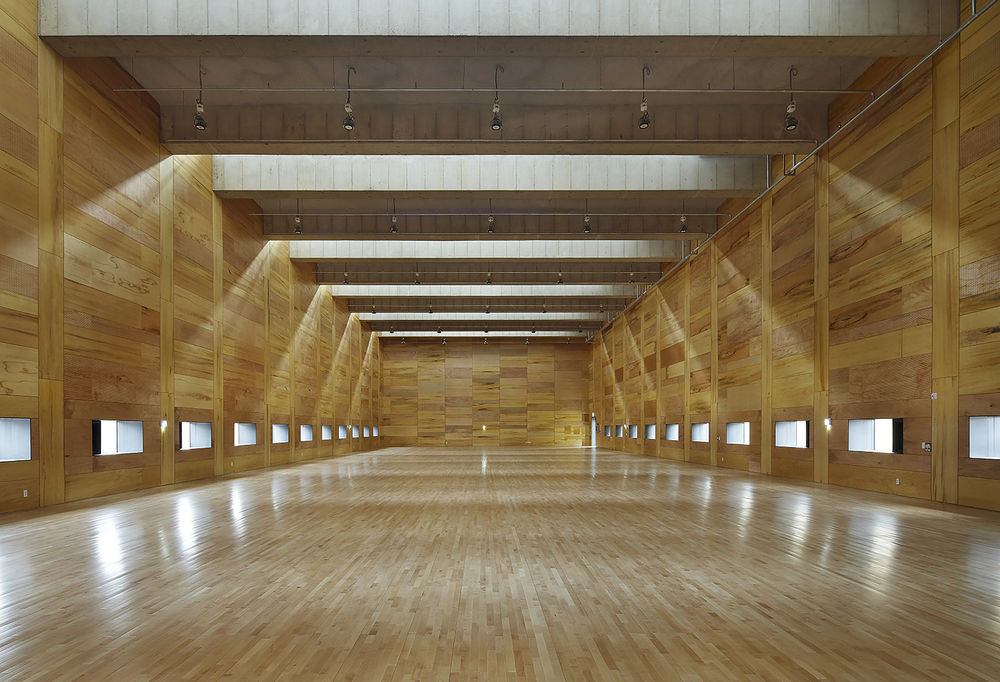
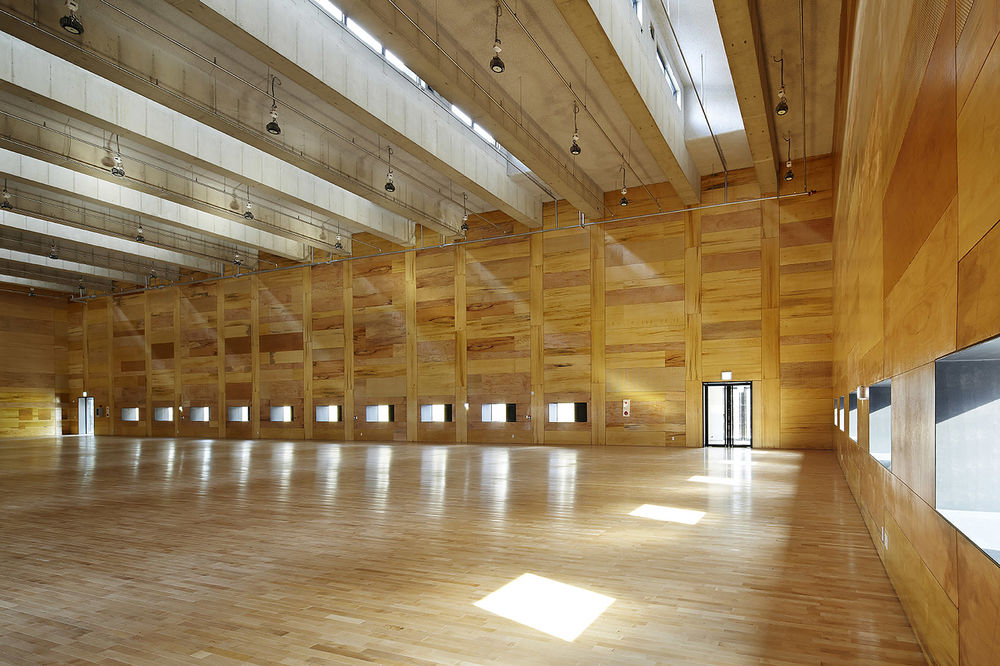
▼自然光间接射入室内,the indirect light enters the building
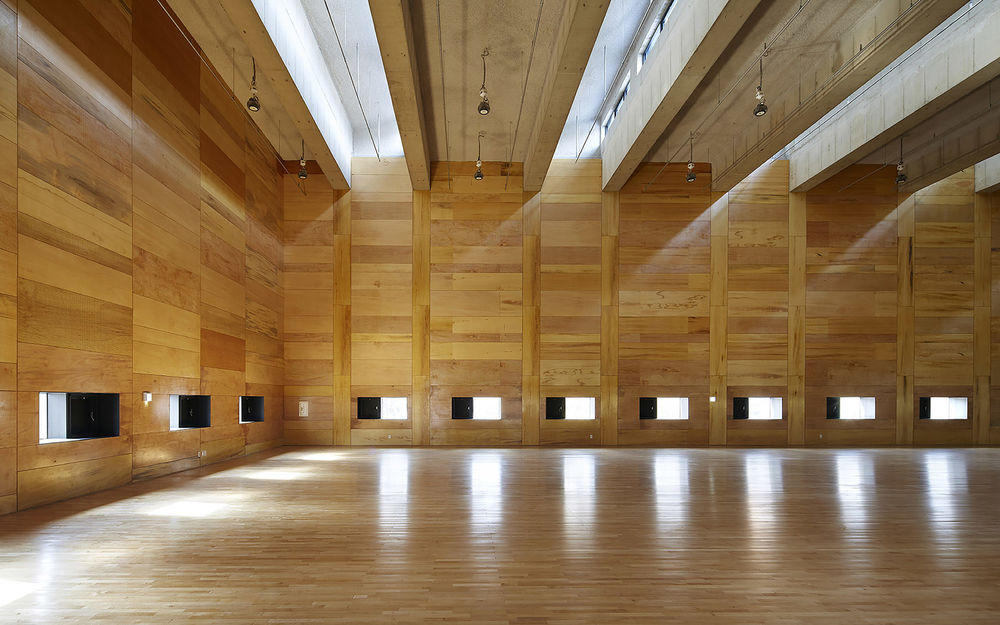
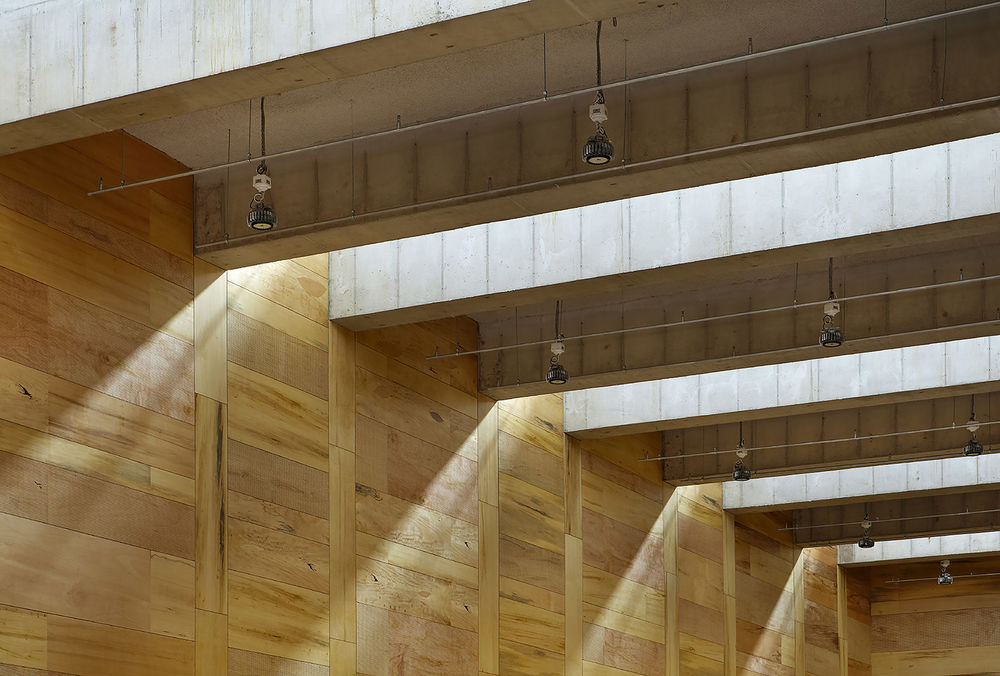
▼场内活动,activities inside
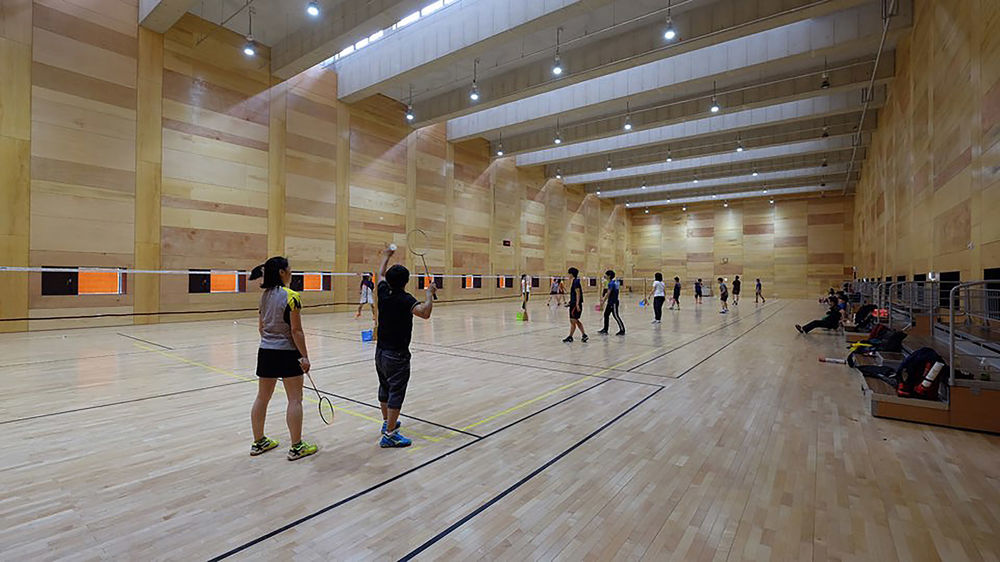
主要承重墙结构被饰以有色混凝土外皮,同时将这一建筑外皮刻以四分之一形态的落叶松木花纹。波动的纹理用以比喻飞舞的羽毛球在混凝土立面上留下痕迹。胶合板和穿孔胶合板交叉摆放来实现场馆内的消音效果。场馆内的地板和墙壁采用木纹图案,延续了混凝土外墙的纹理,并营造了一个温暖又富有质感的场馆氛围。
The main structural bearing wall has a coloured exposed concrete finish. A pattern was revealed by engraving the quadrisect cylinder shaped larch. This ectype texture was intended to engrave the horizontal path of the moving shuttlecock on the surface of the concrete. Plywood and perforated plywood was cross-placed and used as the interior finishing material to absorb sound. The finish of the interior floor and wall was made up with wooden patterns, which continues the coloured concrete pattern on the exterior wall, creating a warm texture and atmosphere in the stadium.
▼细致雕刻的外表皮纹理,the texture on the concrete finish
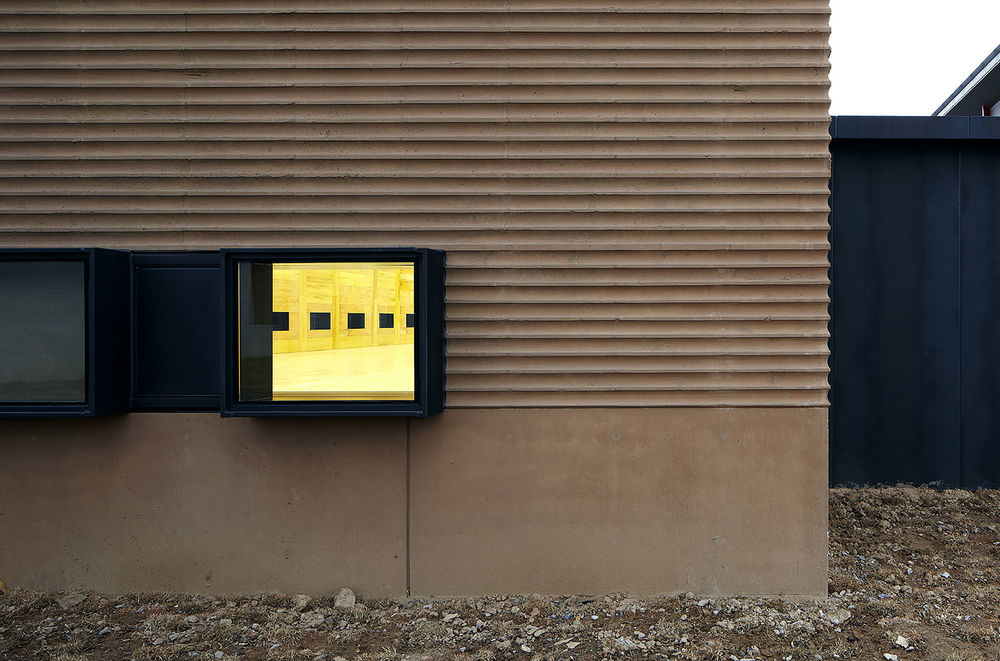
▼内部木纹延续的外表皮纹理,the wooden patterns continues the coloured concrete pattern on the exterior wall
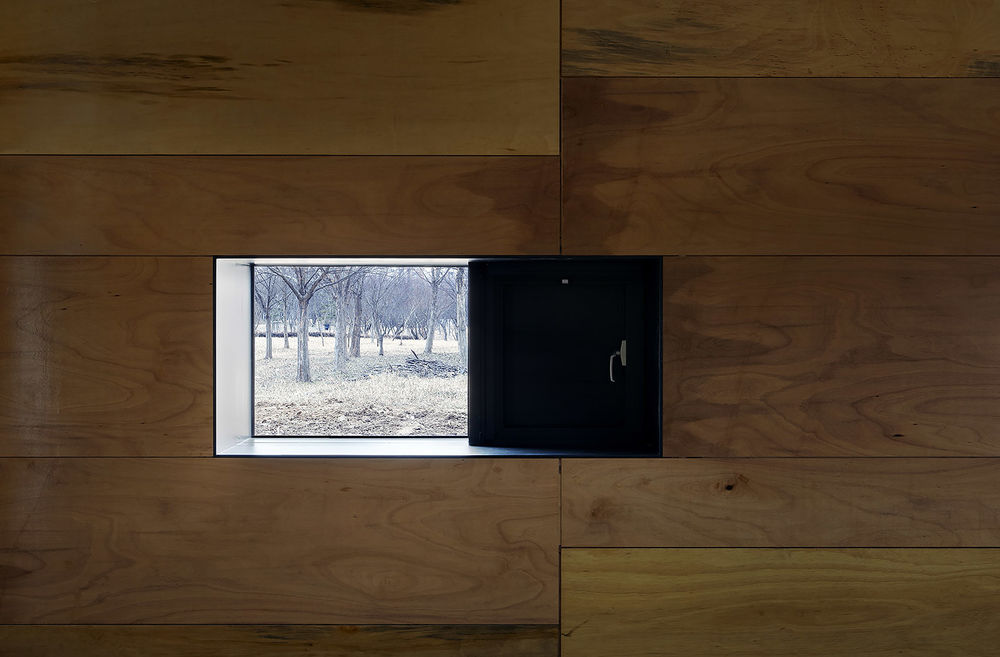
▼建筑外貌,exterior view
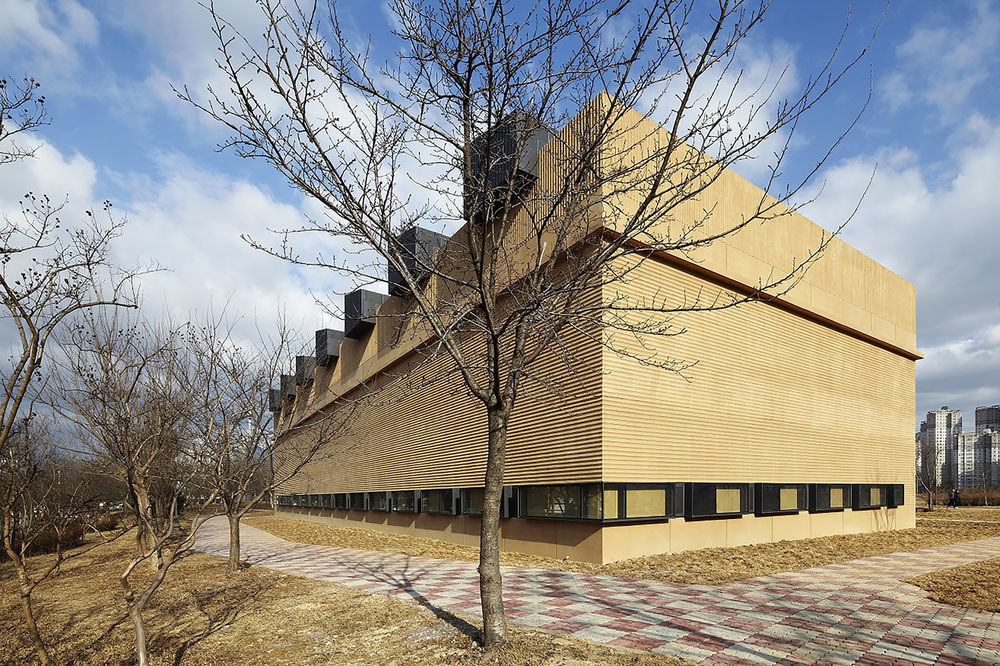
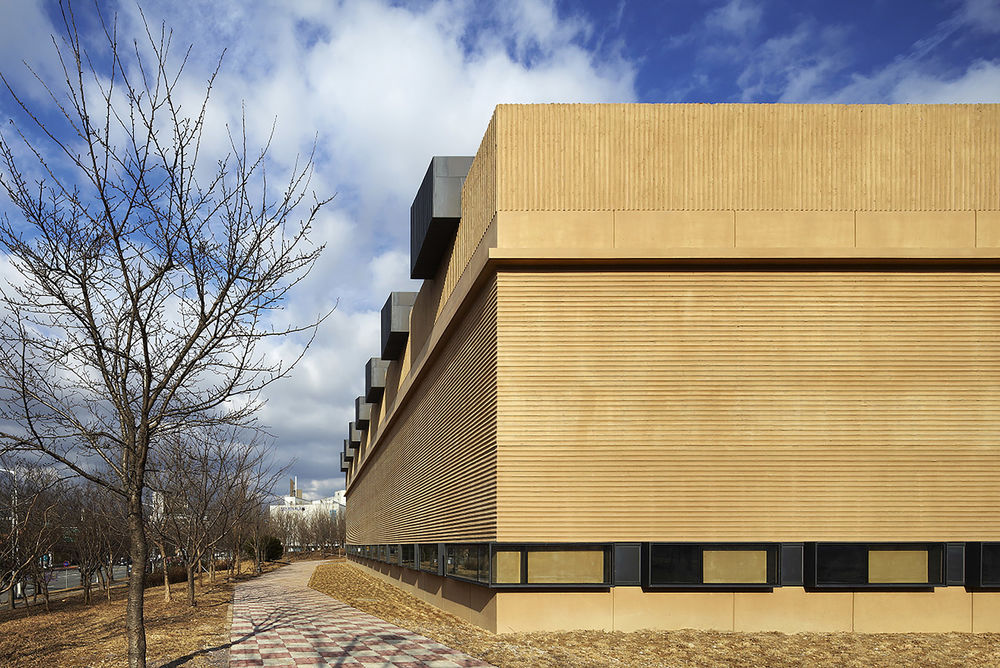
▼光照及消音原理图,the indirect lighting and acoustics


▼总平面图,master plan
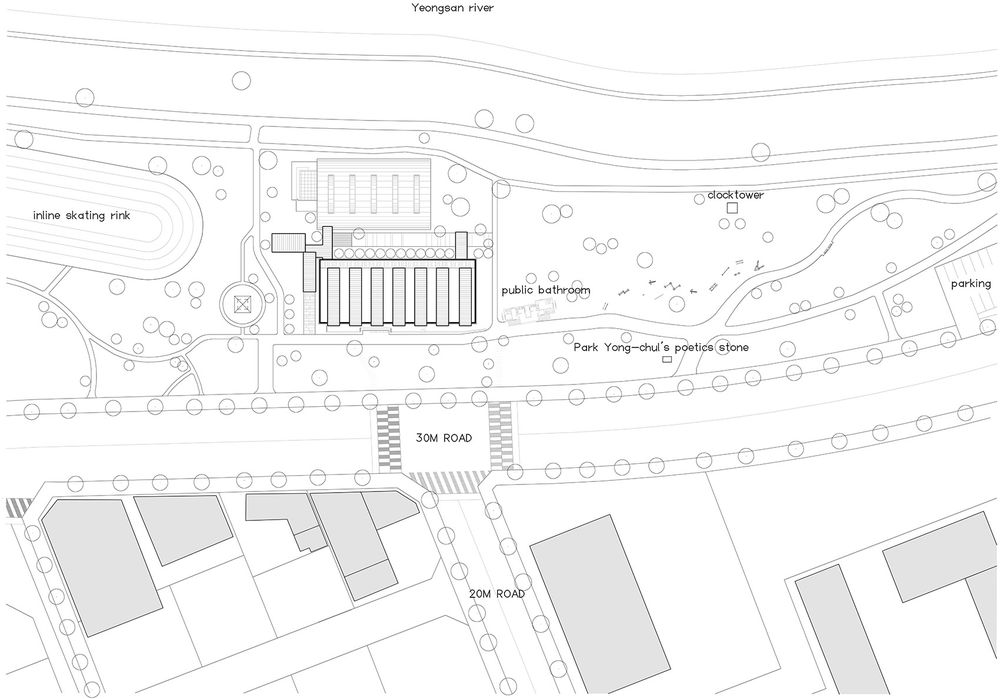
▼一层平面图,the first floor plan
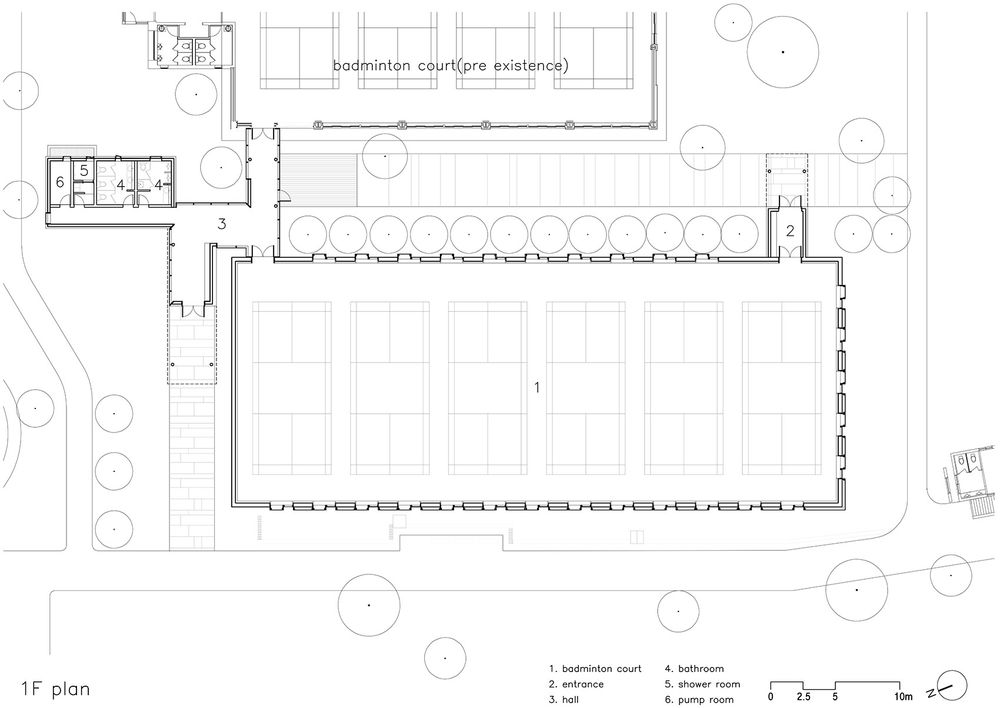
▼阁楼平面图,mezzanine plan

▼屋顶平面图,the roof plan
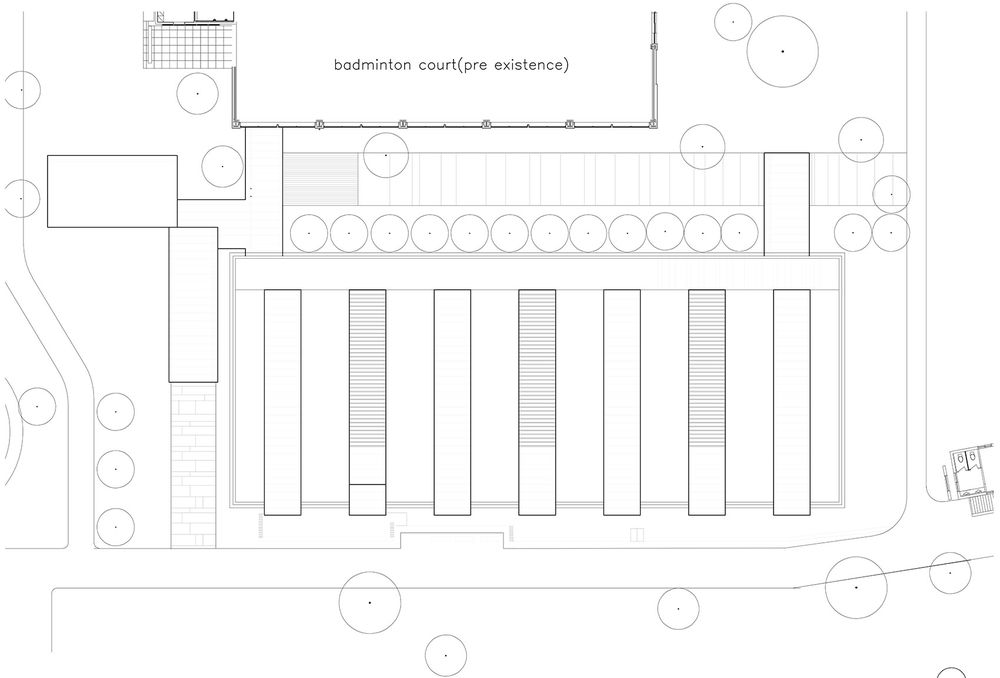
▼立面图,elevation




▼剖面图,section
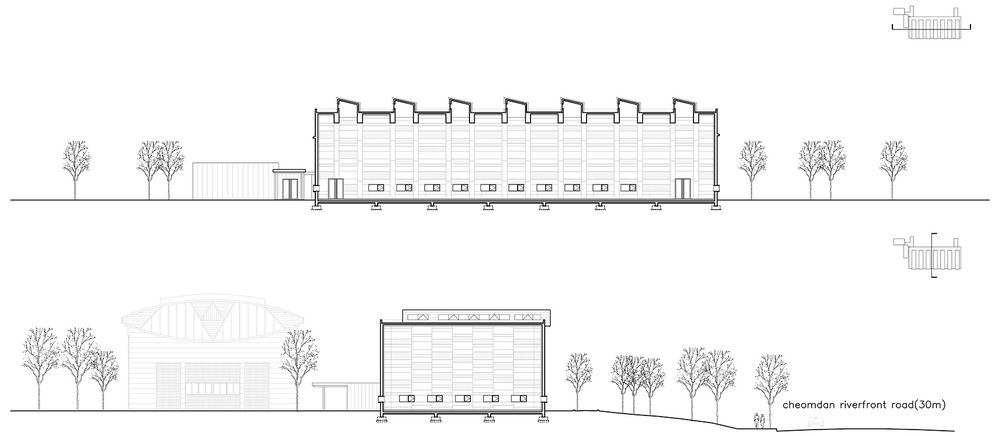
▼立面与剖面细部,detail of the elevation and section
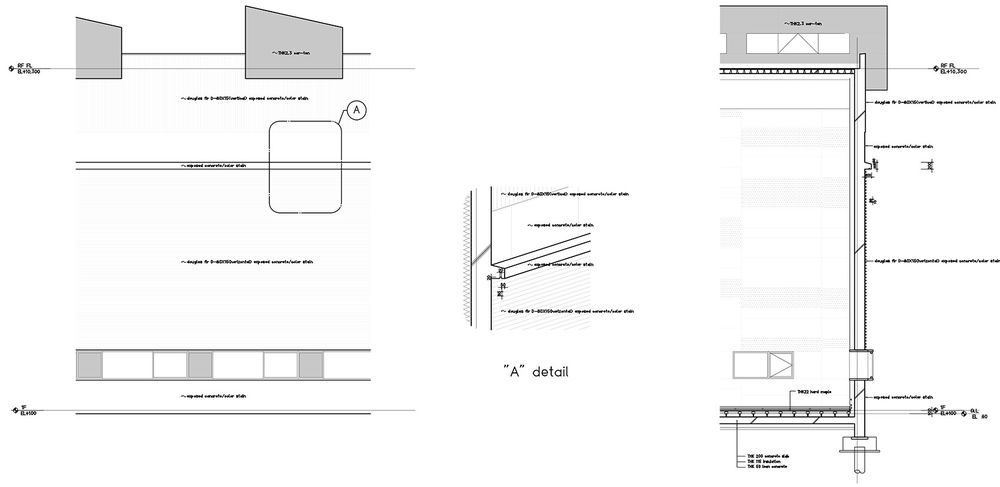
Project Name: Cheomdan Badminton Court Architects: JHW IROJE architects(Jung, Hyo-won)+The Sa-ram Architects(Shin Youngeun) Design Team: Jung Hyowon, Shin Youngeun Location: 760, Cheomdangangbyeon-ro, Gwangsan-gu, Gwangju, Korea Programme: Sports facilities(gym) Site area: 52,899㎡ Building area: 1,024.25㎡ Gross floor area: 999.3㎡ Building scope: 1F Parking: 37 Height: 12.1m Building to land ratio: 6.89% Floor area ratio: 6.84% Structure: Reinforced concrete, Post-Tensioning system Exterior finishing: Color stain on Exposed concrete, Cor-ten Interior finishing: Proofed spray on (perforating) plywood Structure engineer: Seoul Structural Engineering & Consulting Co.,Ltd Construction: Jungdo construction Mechanical engineer: Saeter ENG Electrical engineer: Shin gaseung Engineering & Consulting Co.,Ltd Design period: Apr. 2012 – Feb. 2014 Construction period: Apr. 2014 – Feb. 2015 Completion: Feb. 2015 Photographer: Kim, Yong-kwan



